The next-gen MacBook Pro with Retina Display Review
by Anand Lal Shimpi on June 23, 2012 4:14 AM EST- Posted in
- Mac
- Apple
- MacBook Pro
- Laptops
- Notebooks
The King of All Notebook Displays
For years Apple has been shipping some of the best displays in consumer notebooks, but the MacBook Pro’s Retina Display is in a league of its own. While I never liked the phrase “painted on” in reference to the iPad and iPhone Retina Displays, that’s the best way I can describe the effect the MacBook Pro’s Retina Display has on me. Text really does look painted on. The effect is really the result of two things.
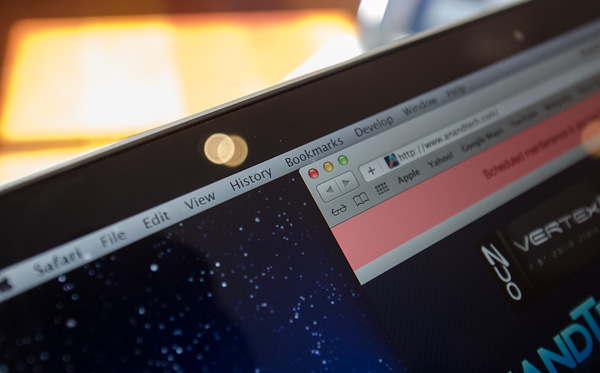
The first is Apple’s removal of its cover glass. LCD panels aren’t particularly attractive, they are ugly squares composed of two pieces of glass and a number of filters/polarizers. To hide the ugly edges, display makers wrap bezels around the display. Most people aren’t fond of bezels so next came a ton of effort to minimize bezel size. An alternative is to simply place a third piece of glass over the entire LCD assembly and make it look as if the bezel and LCD panel are integrated. This outermost layer is known as a cover glass and is what Apple uses on all of its glossy displays. If you’ve ever taken apart a Cinema/Thunderbolt Display or a newer iMac you’ll know that the cover glass is literally just a piece of glass that you have to remove with some suction cups.
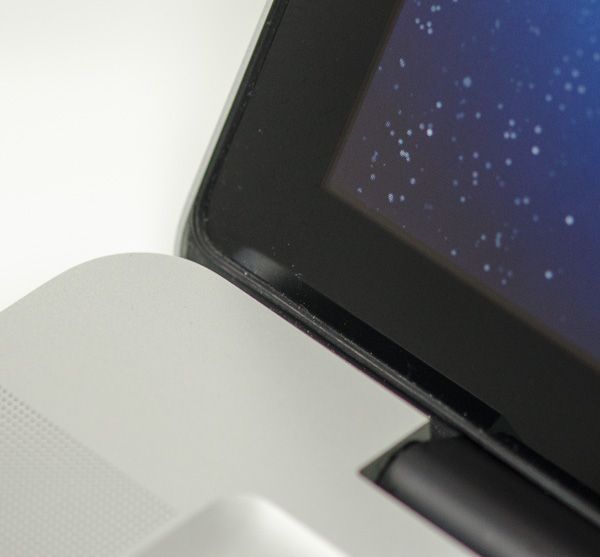
Non-Retina MacBook Pro, notice the gap between the outermost LCD glass and the cover glass
The MacBook Pro’s Retina Display does away with the cover glass and instead uses a fairly unique LCD assembly. There are still two pieces of glass but the outermost glass is actually a different size and shape - it integrates a bezel. By integrating the bezel into the outermost glass in the LCD stack you get the same effect as a cover glass but without the added reflections it introduces.
You also limit the possibility of dust getting trapped between the cover glass and the LCD. The danger is that you no longer have a protective piece of glass in front of your expensive new LCD. If you scratch the display you're scratching the LCD itself. While this has been true for conventional matte displays for a while, it's worth mentioning if you're used to Apple's glossy displays where you did have that added security layer.
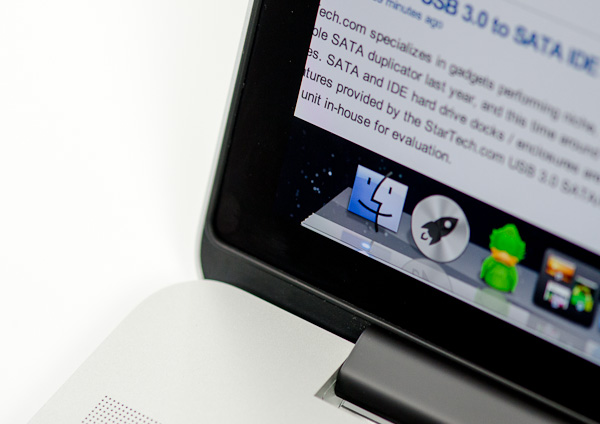
The MacBook Pro with Retina Display, no gap, no cover glass
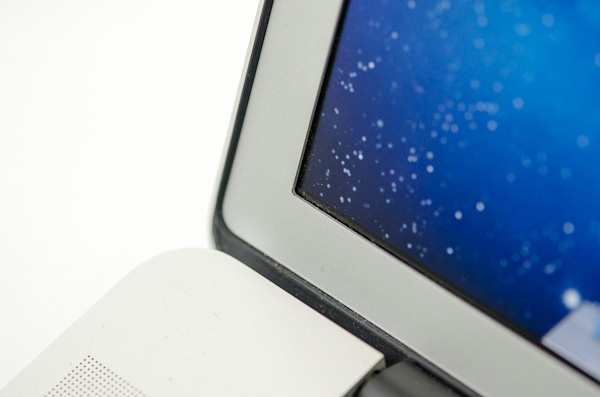
The 2011 MacBook Pro with High-Res Matte display option, no cover glass, top bezel

From left to right: 2010 High Res Glossy MBP, 2012 rMBP, 2011 High Res Matte MBP
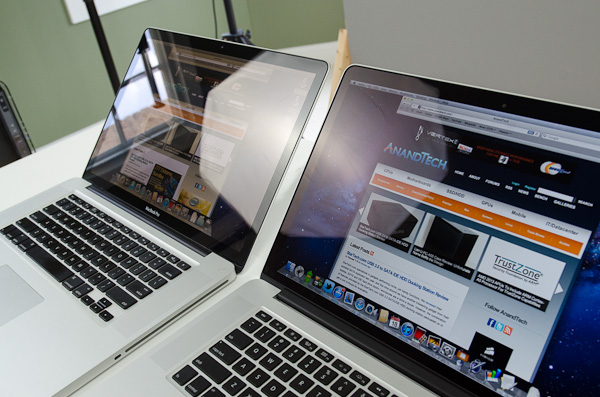
Glare handling indoors - 2011 High Res, Glossy MBP (left) vs 2012 rMBP (right)
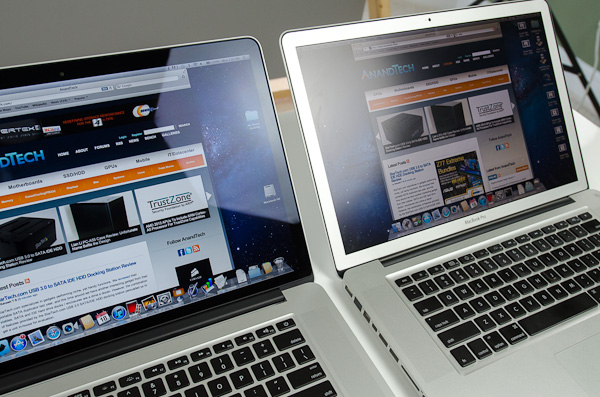
Glare handling indoors - 2012 rMBP (left) vs. 2011 High Res, Matte MBP (right)
The Retina Display is also obviously an extremely high resolution panel at 2880 x 1800. Note that this is 44.6% more pixels than Apple’s 27-inch Thunderbolt Display, and 26.6% more pixels than the 30-inch panels that we’ve loved for so long - all in a 15.4-inch notebook display.
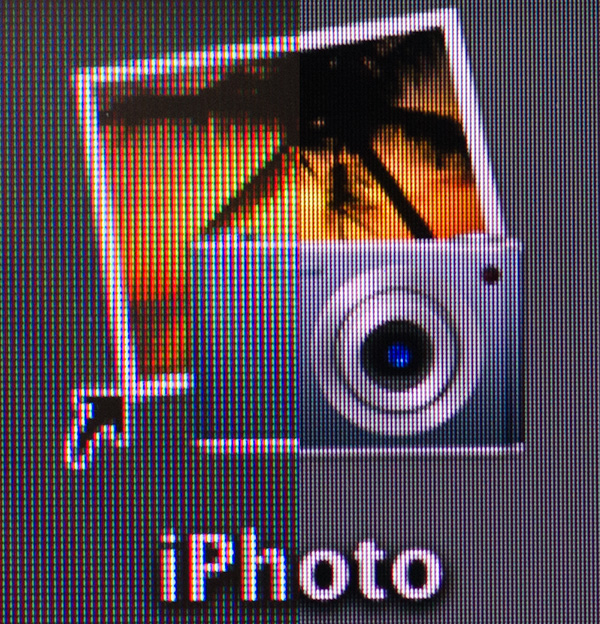
An iPhoto shortcut, High Res 2011 MBP (left) vs. Retina Display MBP (right)
At 220 pixels per inch it’s easily the highest density consumer notebook panel shipping today. At normal viewing distances and even with my face closer than I’m comfortable putting it I simply cannot discern individual pixels.
It’s the combination of these two elements, the removal of the cover glass and the insanely high pixel density that makes everything from text to UI elements just look painted on the new Retina Display. And the effect is gorgeous. I’ve never seen a prettier panel and it’s actually ruined me for pretty much all other displays, notebook and desktop.
While I can appreciate the iPad’s Retina Display, the impact from the MacBook Pro’s display is even more significant. Perhaps it’s because I still spend so much time working on a standard, non-tablet display, but I’m far more excited about this display than anything else Apple has delivered under the Retina moniker.
It’s not just pixel density that Apple has to offer here. Similar to its Retina Displays in the iPhone and iPad, the MacBook Pro’s Retina panel ditches TN in favor of IPS technology. The result is an incredible improvement in viewing angles. On a notebook I don’t spend a lot of time viewing it from far left/right angles, although I see the benefit when I’ve got others huddled around my display. Here the panel performs admirably - you lose brightness at far left/right angles but there’s no perceivable color shift. In fact, the painted on effect is even more impressive at these far left/right viewing angles.
For a single user however the more impressive characteristic is just how good the display looks at vertically off-center angles. I wrote much of the initial parts of this review while on an airplane in coach, which with a 15-inch notebook on my lap means I’m going to be looking at the display at a weird angle to begin with. The thinner rMBP doesn’t do enough to make the airplane usage model any better if the person in front of you decides to recline, but the IPS panel does make the display perfectly usable at the off-center angle you’ll inevitably have to deal with.
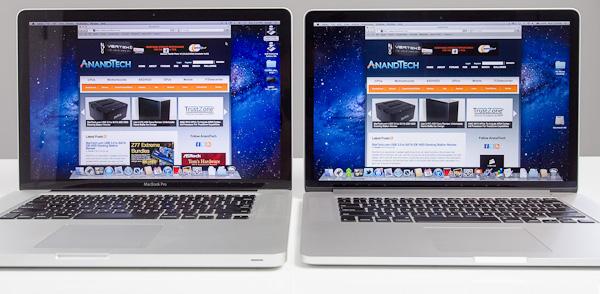
2010 High Res, Glossy MBP (left) vs. 2012 rMBP (right)
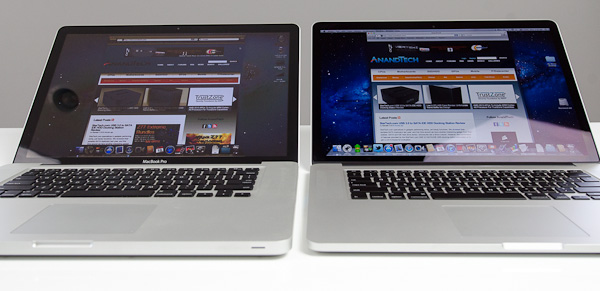
Hello colorshift!
2010 High Res, Glossy MBP (left) vs. 2012 rMBP (right)


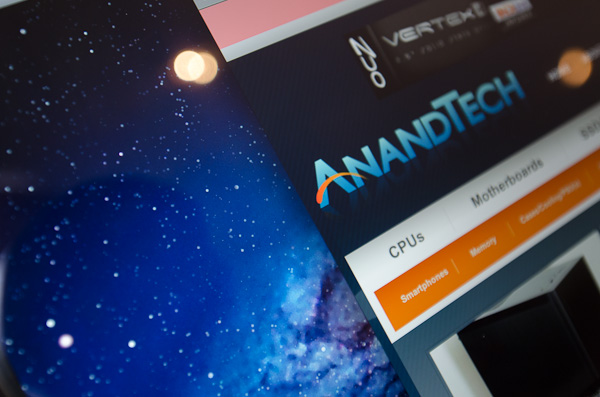
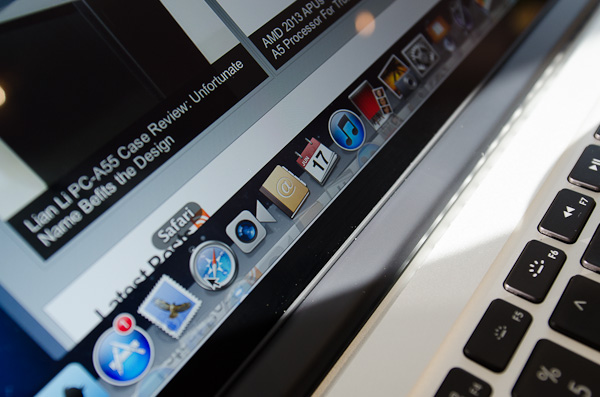
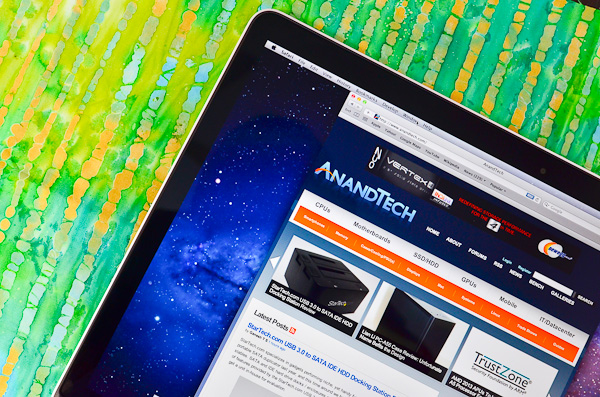
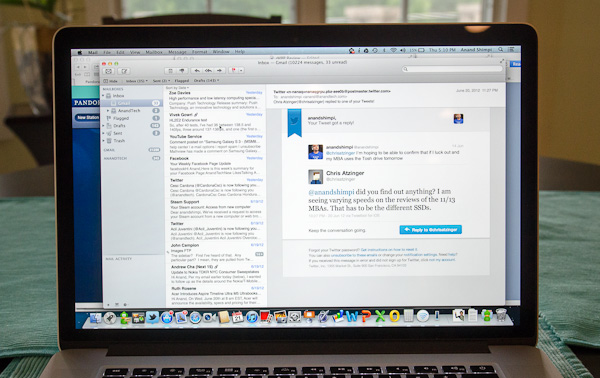
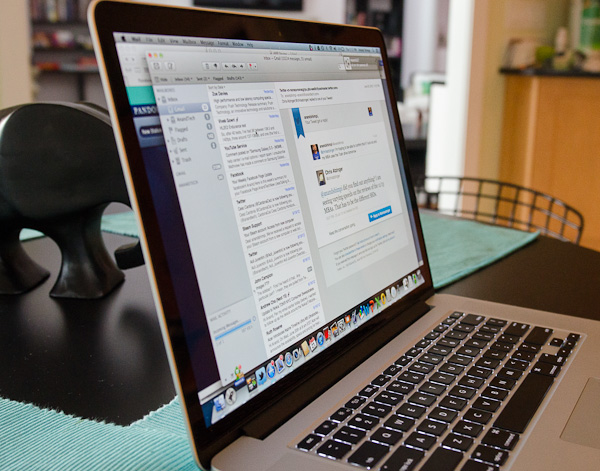








471 Comments
View All Comments
EnzoFX - Saturday, June 23, 2012 - link
Just let apple push down the high end tech, let it trickle, and let pc manufacturers bring up their game, is it not a win win? Haters gonna hate, so lost.MacTheSpoon - Saturday, June 23, 2012 - link
I have to say, after having tried one out in an Apple Store, that I was pretty surprised how underwhelming and minor the screen improvement was. I would have thought from all the breathless press coverage that it was going to be a life-changer like apparently it was for Anand, but the fact was that looking at the thing at waist-height on its bench I personally couldn't even tell the difference. I had to stick my nose in it to see a difference. From a normal typing distance I could see a bit more of a difference, but not as much as I'd imagined.Maybe it's just that I have crappy eyes, but I didn't see a single other customer in the store looking at the displayed laptops, either. I bet most walked by without even noticing the different display--because laptops are already pretty close to a retina display at normal usage distances. It's not like a phone, where you hold the thing up to your face.
I also found it disappointing that 1080p stuff looked so small. You had to blow it up to full screen, and then it seemed...well, it didn't seem that sharp. It was pretty underwhelming. My test material was the Big Buck Bunny vid on YouTube. I thought, so I would pay all this money and end up with this subpar viewing experience?
Honestly I think I would probably prefer a great 1080p display with a full sRGB gamut. I like the black levels and contrast on the MBP, but you can pretty much get that and more on other laptops. And matte, too.
The thing that I liked most about the machine, when all was said and done, was its looks. I love the thinness. And the lack of the wedge shape, which never appealed to me. But I left the store feeling like I wasn't missing out on anything too amazing by not having that screen. For a pro machine I'd probably want a workstation with full gamut and as much storage as possible. For a multimedia machine I'd probably wait to see how the XPS 15 redesign turned out. It will probably offer better speakers, storage, and color for less than half the price.
Ohhmaagawd - Saturday, June 23, 2012 - link
I had exact opposite reaction. I went to the Apple store yesterday and was blown away by the screen.But you can't use youtube for your testing, they are all fuzzy.
Spoony - Saturday, June 23, 2012 - link
Sublime review, as we always relish from Anandtech.To follow up, what do we know about the thermal performance of Kepler and IVB in the 2011-style MBP chassis?
Additionally, does opting for the 2.3GHz model do any significant favors for temperature or battery life?
Reading this review on a Retina iPad was amusing because all the pictures were fuzzy. The web has a way to go before it looks great at 220+ dpi.
da1bigkahuna - Saturday, June 23, 2012 - link
I was wondering if you had any fairly broad comparisons you could make that we might expect from Haswell - and it's successor. I mean something like, "Haswell should be at least 10% faster overall, but the next chip will increase speed far more". Any info would be appreciated, but ultimately speed is the main thing. Next main thing would be if thunderbolt will be a lot better in those future systems.dagamer34 - Saturday, June 23, 2012 - link
I believe Haswell is another tock in terms of GPU design, and all CPUs are designed for far lower thermal limits. Anand has referred to it as the "ideal" ultrabook CPU, allowing for it to even be in the screen of a computer with a minor increase in thickness.houkouonchi - Saturday, June 23, 2012 - link
The reason I bought my first Mac. Of course I run at the native 2880x1800 (I ditch the HiDPI).The big problem I have had so far is getting it working in linux. Seems like really bad linux support right now. The nvidia driver doesn't want to work and the thunderbolt ethernet also doesn't work. The wireless is also really shoddy which made it a pain in the but to just get my linux installation moved over (probably easier if I installed off a USB cd-rom drive).
I am coming from a 22.2 inch 3840x2400 (204PPI monitor) so going to a 220 PPI laptop at native resolution was no big stretch for me. On linux I run X at 75 DPI even on those dense monitors. Its all about the desktop real-estate for me.
houkouonchi - Saturday, June 23, 2012 - link
Just to add its funny that running at the native 2880x1800 is the only way to have third-party apps look good (like word processors/excel/pdf that you can up the font/text size on). Also using safari + google maps the plugin was rendered at 1/4th the resolution. Rendered correctly when running native 2880x1800.krazyfrog - Saturday, June 23, 2012 - link
I would like you guys to add a webcam test as it will help judge the quality of the built-in webcam and microphones. Otherwise, a fantastic review, as usual.LuckyKnight - Saturday, June 23, 2012 - link
I hope Apple release a 13" Macbook Pro with dedicated graphics and a slightly better screen!!